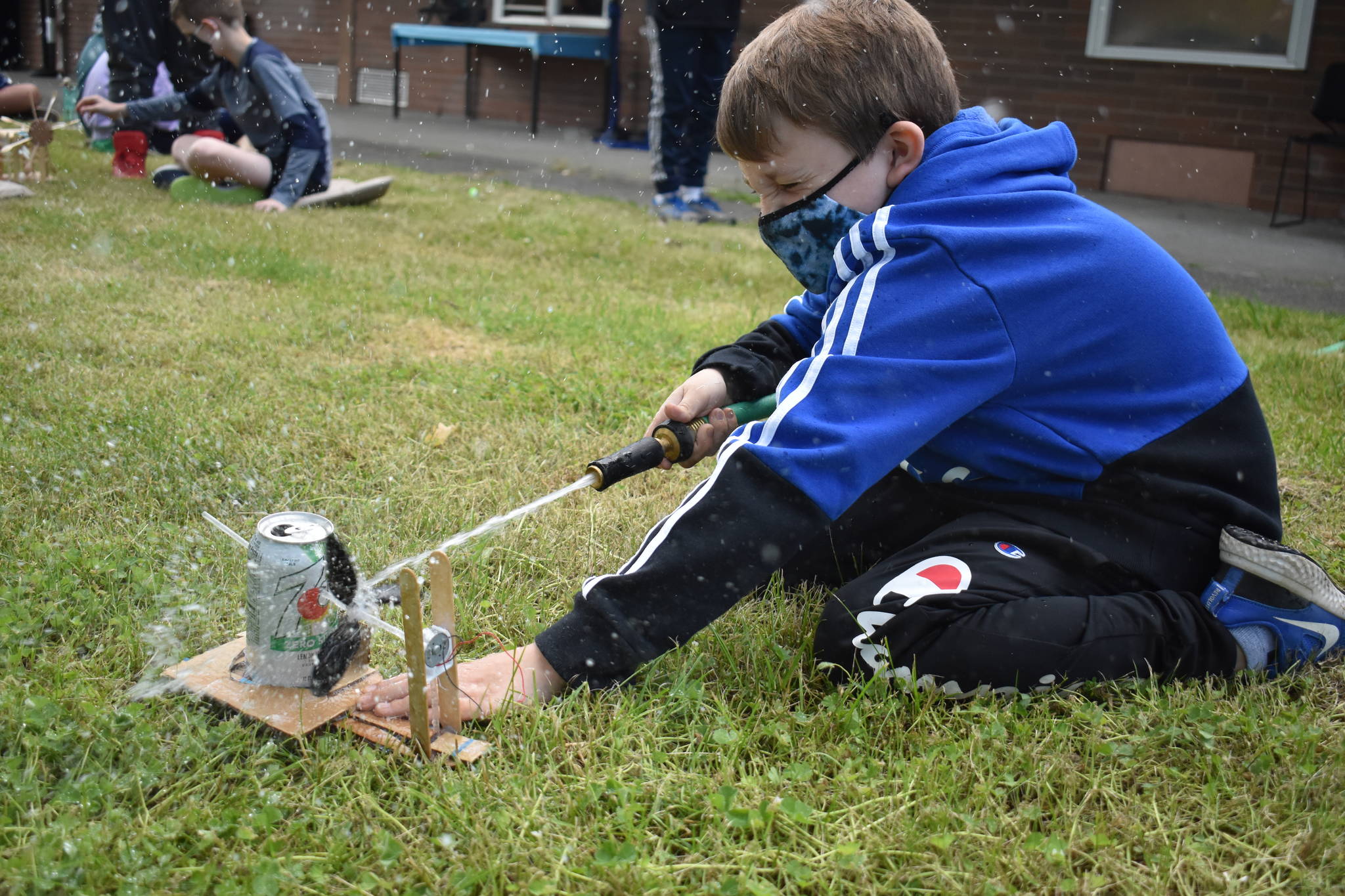After learning about renewable energy this year, Jean Cravy’s South Whidbey Elementary class got a hands-on look at three ways to create power without fossil fuels.
Cravy said she wanted to teach her students more about renewable energy after several kids said they were inspired by teen climate activist Greta Thunberg’s work.
Cravy teaches a class of students in grades third through sixth.
The students finally tested their wind turbines, solar cars and water wheels on June 8 as they counted down the days until summer. Students had the creative license to build one of the three projects, however, they thought best from a variety of materials and gears.
The goal was to create enough energy to turn on small lights or to power the solar car.
Fifth-grader Max Rieneckert said he had learned about alternative energy sources before but making a solar car solidified certain concepts.
“I kind of knew how solar panels worked before, but now I understand how to transfer energy through the wires,” he explained.
Aura Smith, a fourth-grade student, said she learned about more energy sources.
“I didn’t know steam was an alternative energy,” she said.
After testing his wind turbine, sixth-grader Liam Gilles said he enjoyed the project and wants to take model design as an elective next year.
The school district received a grant from the National Oceanic and Atmospheric Administration to teach students about global environmental issues, particularly those related to watersheds and ocean ecosystems. The grant also supported projects for other South Whidbey Elementary students, like one class’ journey to becoming “whale-wise.”
Besides learning about alternatives to fossil fuels, some of the students received a lesson in resilience. The cloudy weather wasn’t exactly conducive to powering a solar car, and the water pressure from the garden hose was challenging for some of the water wheels.
Cravy reminded the class about all they had learned and asked them to think about the future.
“We learned a lot and even if it didn’t work,” she said, “it is not a failure, it is a beginning step.”



